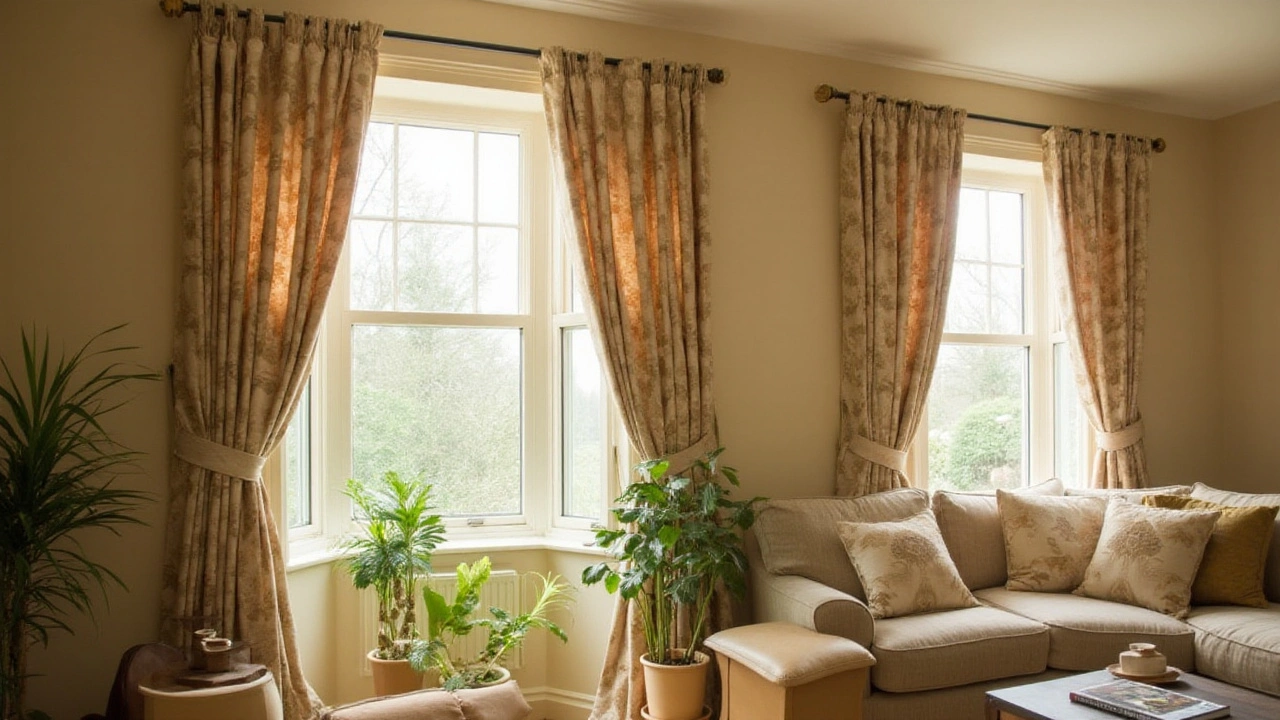Curtain Sides: How to Choose, Fit, and Style Them
If you’ve ever stared at a window and felt something was missing, curtain sides could be the answer. They’re the extra fabric panels that hang on each side of your main curtains, adding privacy, depth, and a polished look without a major overhaul. In this guide we’ll break down why you might want them, how to pick the right ones, and the easiest way to get them hanging perfectly.
Why Curtain Sides Matter
First off, curtain sides do more than look good. They block light leaks around the edges, which helps keep your room cooler in summer and warmer in winter. They also give you a bit more control over how much of the view you see – pull the sides together for total privacy or swing them open for a breezy feel.
From a design angle, side panels create a layered effect that can make a simple window feel high‑end. Choose a lighter shade for a subtle backdrop, or go bold with a contrasting color to turn the curtains into a statement piece. Because they’re separate pieces, you can swap them out seasonally without changing the whole drape.
Getting the Fit Right
The biggest mistake people make is buying sides that are either too short or too wide. Measure the gap between the main curtain rail and the window frame – that’s where the side panels will sit. Aim for a side panel that’s about 2‑3 inches taller than the window opening so it sits just above the trim and looks intentional.
When it comes to width, a good rule of thumb is to make each side panel half the width of the window opening. That way, when both sides are closed, they meet neatly in the middle without crowding the main curtain.
Hardware is another piece of the puzzle. Most curtain rods come with “side brackets” that let you slide the panels on a separate rail. If your existing rod doesn’t have them, a simple extension pole or a double‑track system can do the trick. Look for brackets that lock in place; you don’t want the sides sliding around every time you open the curtains.
Installation is straightforward: attach the side brackets to the wall or window frame at the same height as your main rod, thread the side panels onto the new rail, and hang them. A level and a tape measure are all you need. If you’re using a double‑track, just slide the side fabric onto the inner track and let the outer track hold the main curtain.
Fabric choice matters too. If you’re after extra insulation, pick a heavier material like linen‑cotton blend. For a light, airy vibe, sheer polyester works well and still blocks glare. Many retailers also sell reversible sides – one solid color on one side, a pattern on the other – giving you two looks with one purchase.
Finally, think about maintenance. Side panels are usually smaller, so they’re easier to wash. Check the care label before you buy, and consider a fabric that tolerates machine washing if you want low‑effort upkeep.
In short, curtain sides are an inexpensive way to boost comfort and curb appeal. Measure correctly, pick hardware that matches your existing setup, and choose fabrics that suit both your style and climate. With a few simple steps you’ll have a window that feels custom‑designed, and you’ll notice the difference the moment the sun hits those extra panels.
-

Which Curtain Side Faces Out: Key Factors and Tips
Deciding which side of the curtain faces outward isn't just about aesthetics; it can impact your home's light, privacy, and energy efficiency. This article delves into how the choice of curtain direction can affect your space, providing practical tips and interesting facts. Learn how materials, patterns, and environmental factors play a role in this decision. Explore the benefits of proper curtain positioning and elevate your home decor effortlessly. Suitable guidance ensures that your curtains not only look great but also serve their purpose effectively.
